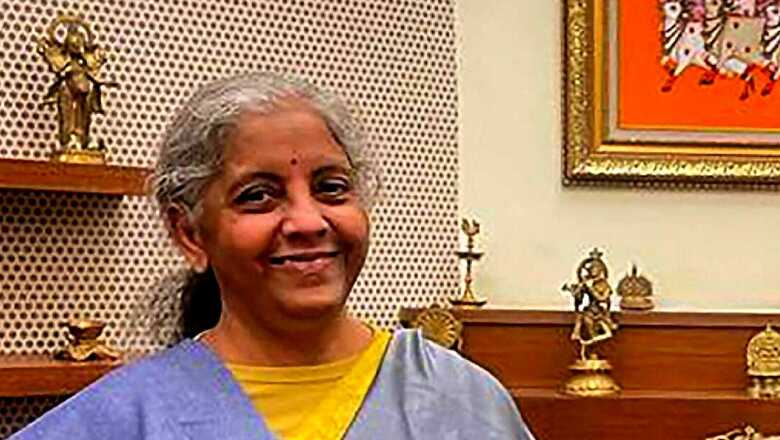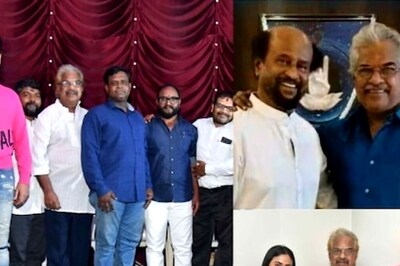
views
Finance Minister Nirmala Sitharaman presented the Union Budget for the financial year 2022-23 on February 1. The most significant aspect of this budget was that it had no shocks at all. It maintained continuity with the budget presented last year in being straightforward and future-looking. That the annual budget is focusing less on accounting, while keeping it transparent and predictable, and bringing in new vision and ideas is a good sign.
Over the years, Union Budgets anyway have lost their unitary control on government policy. Governance reforms now happen through the year and budgets are not the chosen instrument for impactful change as they used to be a few years ago. That agile, iterative policy making can work is already being talked about more frequently. Previously, taking away the railway budget which often used to become the pulpit of grandstanding showed that it was possible to re-baseline the process of policy making.
Similarly, two consecutive years of the Union Budget talking about a broad vision, new ideas and specific plans to get important things done well may be an emerging trend to watch out for. The accounting aspect remains important with wide public interest, and naturally so, given its immediate and proximate impact on everyone’s life. However, the headlines are already beginning to shift from the usual “kya mehenga hua aur kya sasta”, which used to be the post-budget day pièce de résistance for the front page of Hindi newspapers until recently.
The Union Budget for 2022-23 had three key themes representing a broad-brush policy vision of the government.
First, there is sufficient evidence that government investment on infrastructure creation will remain the centrepiece of budget announcements. From less than Rs 2 trillion in 2014-15, the capital expenditure (capex) of the central government has increased this year to Rs 7.5 trillion and will be closer to Rs 10 trillion if the support to states is also considered. Having adequately provided for the capex allocation, the budget speech is increasingly focused on the realisation vision.
This budget introduced the idea of pushing the Prime Minister Gati Shakti Plan through specific capability building via the Capacity Building Commission. This is very important, because Indian economy is at a juncture where Rs 20 trillion may be available every year for capex between central, state and private players, but there may not be enough project execution capacity in the system to spend this money. This is, of course, a much better problem to have than not having money for productive pursuits. The recognition that systemic state capacity needs to be built and quickly to benefit from a fiscal and monetary sweet spot was a welcome move.
A specific capex pool of Rs 1 trillion earmarked for the states is again a pragmatic move. The states can fund smaller but more numerous projects through this route, leading to near-term tangible benefits with a broader spatial coverage. The Monetary Policy Report of April 2019 by the Reserve Bank of India had indicated that the multiplier effect of central capex in the economy was 3.25 and that of the state capex was 2. It is this effect that the budget seeks to unlock.
Second, the budget indicates that India’s relentless push towards a bouquet of innovative public digital infrastructure assets will continue. The budget calls out several sectoral use-cases, where digital services provided by public or private players or a combination thereof will be encouraged for technology led productivity improvement.
For agriculture, the budget talked about greater research focus and collaboration between institutions in public sector and private agri-tech players. The use of ‘Kisan Drones’ will be promoted for crop assessment, digitisation of land records, spraying of insecticide.
A workforce relevance initiative is planned leveraging a DESH stack – Digital Ecosystem for Skilling and Livelihood. As the nature of jobs evolves dramatically, public investments will help in bridging the gap between tomorrow’s requirements and today’s skills. The budget also talked about use of TV channels to help state governments provide supplementary education in regional languages.
Continued focus on healthcare reaping the benefits of digitalisation is demonstrated via the National Digital Health Ecosystem. This system will consist of digital registries of health providers and health facilities, unique health identity, consent framework, and universal access to health facilities.
Third, the budget indicated that the process reforms will continue and accelerate. These reforms ensure that the big announcements translate into results via smoother implementation. The Gati Shakti masterplan is the overarching example of this in the logistics and mobility space.
The budget sought to expedite speedier corporate exit where voluntary winding up of companies can be expedited from two years to under six months. The government procurement rules will be changed to bring in quality parameters apart from the usual L1 bidding which was cost-focused. The government also planned to make speedier payments for the contracts signed. A key demand of the industry to unlock working capital and alleviate procedural difficulties was doing away with bank guarantees for government contracts. The budget now proposes using surety bonds in the place of cumbersome bank guarantees.
These measures are not one-time announcements or an end in themselves. The signal here is that new themes will be introduced every year under these broad headings. This will make the budgeting exercise as much about simplification and plans for at-scale execution as about financial management.
When the commentariat dubs a budget ‘boring’, it is a validation of policy making. That the country needs continuity and certainty which builds on a continuous process of calibrated change.
Aashish Chandorkar is Counsellor at the Permanent Mission of India to the World Trade Organization, Geneva. The views expressed in this article are those of the author and do not represent the stand of this publication.
Read all the Latest Opinions here




















Comments
0 comment